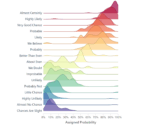Handling real-time and large-scale data changes effectively is now fundamental for businesses aiming to remain agile and responsive in today’s dynamic market landscape. The explosion of data sources, rapid shifts in consumer behaviors, and growing regulatory compliance needs all necessitate powerful and adaptable approaches to change data capture (CDC). Incremental processing of change data capture offers organizations the strategic advantage of processing only the data that has changed or newly emerged, significantly reducing overhead and improving organizational responsiveness. In our experience at Dev3lop, leveraging incremental CDC strategies doesn’t just streamline data pipelines—it transforms them into proactive, insights-driven engines capable of accelerating informed decision-making. Let’s delve deeper into incremental processing methodologies and uncover how organizations can strategically cultivate scalable and efficient CDC operations for their data-driven journey.
The Strategic Advantage of Incremental CDC Processing
Incremental Change Data Capture is essential because it emphasizes processing only the data differences since the last cycle or ingest, thereby reducing redundant operations and streamlining resource consumption. Traditional CDC methods often fail to scale effectively, as organizations confront data flows that grow exponentially, causing latency and negatively impacting operational databases. Incremental CDC solves these pain points by capturing only the modifications that matter—new inserts, updates, or deletes—since the previous ingestion period. This focused approach enhances system performance, cuts storage costs, and elevates overall pipeline efficiency.
Implementing incremental processing gives businesses increased analytical agility by empowering near-real-time insights. For instance, a retail organization monitoring customer behaviors with incremental updates can swiftly adapt their marketing strategy based on rapidly changing consumer preferences. This proactive capability elevates decision-making from reactive guesses to data-driven strategies grounded in operational excellence.
Transitioning to incremental CDC also aligns well with common strategic initiatives, such as budget-friendly modern approaches. If your organization is considering efficient data management methods under budget constraints, we recommend looking into our detailed guide on setting up a modern data stack on a budget, where incremental CDC values can be strategically applied to maximize data effectiveness without inflating expenditures.
Understanding Incremental CDC Approaches
When adopting incremental CDC strategies, several methodologies should be considered, tailored explicitly to organizational needs and technical constraints. Two common incremental CDC approaches include Timestamp-based and Log-based methods.
Timestamp-based CDC leverages datetime stamps within source databases, comparing timestamps of records to identify and extract only recent changes since the previous ingestion. It’s straightforward and easily implemented but equally susceptible to certain drawbacks—such as accuracy risks due to transaction delays or concurrent updates modifying timestamps inaccurately. Understanding potential pitfalls is critical; we regularly advise reviewing our insights on improving the performance of your ETL processes that address such nuances directly.
Log-based CDC, alternatively, closely examines database transaction logs or redo logs to precisely capture data modifications directly from transactional operations. Usually, this approach guarantees more accuracy and completeness in incremental data collection processes, as it captures data changes at its most granular level. For robust and comprehensive CDC, log-based processing remains superior, albeit requiring slightly more sophisticated tooling and expertise.
Choosing between these incremental methods critically impacts real-time analytics capabilities and operational efficiency—both cornerstones of advanced analytics consulting. Our clients gain measurable performance boosts and enhanced decision-making agility with tailored incremental CDC strategies, as reinforced through our detailed advanced analytics consulting services.
Overcoming Challenges in Incremental Processing
While incremental CDC offers powerful strategic advantages, organizations must navigate specific technical challenges to harvest its full benefits. A fundamental challenge involves maintaining offset management and checkpoints, ensuring that each ingestion cycle captures precisely the correct increment of change. Failure to manage offsets can lead to duplicate entries or data loss, adversely affecting data quality and analytics integrity.
Data consistency and transactional integrity represent additional technical hurdles. During incremental processing cycles, transactionally consistent datasets must be ensured to prevent misrepresentations in downstream analytics products. Tackling these complicated synchronization needs leads companies to explore advanced alignment methods. For deeper insights into ensuring solid synchronization across systems, consider reviewing our practices on bidirectional data synchronization patterns between systems. This guidance helps organizations effectively address synchronization challenges inherent in incremental CDC operations.
Realizing Advanced Analytics Potential through Incremental CDC
Incremental CDC isn’t simply about efficient data movement; it’s transformative for realizing strategic analytics initiatives that depend on timely and accurate data. Advanced analytics initiatives, such as predictive modeling, machine learning, or anomaly detection, require continuously fresh data to remain effective. Think of incremental CDC as fuel—efficiency and consistency in data delivery translate immediately into responsive analytics capabilities.
For instance, in network-related data contexts, CDC’s incremental processing unlocks quicker adaptation to changes, providing opportunities to use impactful visualization paradigms. As organizations mature in their incremental CDC methodologies, integrating forward-thinking visualizations, like those discussed in our innovative Non-Euclidean visualization techniques for network data, demonstrates how timely CDC data can dramatically enhance organizational understanding and decision-making by visualizing relationships otherwise hidden by conventional methods.
Our advisory and analytics practices at Dev3lop demonstrate repeatedly that well-executed incremental CDC processes dramatically empower companies in their analytics journeys. Incorporating methodologies that drive analytics maturity through swift incremental CDC supports delivering insights in clearer, actionable, and impactful ways.
Building Cohesion and Avoiding Pitfalls: Communication is Key
Successful implementation and management of incremental CDC solutions demand effective communication and collaboration across technical and business teams. Miscommunication about incremental CDC expectations can lead to gaps in data quality, misunderstandings about system performance, or delivery speed mismatches that ultimately jeopardize trust in data pipelines.
We strongly advocate the establishment of dedicated analytics working sessions to bridge these gaps proactively. Working sessions not only strengthen incremental CDC execution but also foster broader organizational knowledge about data and analytics as strategic assets. Clarifying pipeline requirements, identifying misalignments early, and encouraging real-time dialogue between stakeholders significantly reduces risks attributed to miscommunication. To learn more about successfully formalizing these beneficial inter-team interactions, review our detailed recommendations on using working sessions to reduce miscommunication in analytics projects.
At Dev3lop, we’ve witnessed firsthand how clarity around incremental CDC operations promotes better governance frameworks, quicker adoption of innovative methodologies, and superior analytics-driven outcomes. Communication, alignment, and cohesion aren’t ancillary to incremental CDC—they’re foundational.
Conclusion: Incremental CDC – An Enabler for Operational Excellence
Incremental processing for Change Data Capture represents a critical opportunity for organizations intent on increasing analytics agility, enhancing pipeline efficiency, and ultimately driving innovation and informed decision-making across their enterprise. By adopting an incremental CDC approach tailored specifically to their operational and analytical needs, organizations can pivot proactively, capitalize on emerging trends, and address challenges effectively.
Dev3lop’s extensive experience and strategic advisory align closely with organizations seeking to deploy incremental CDC as part of their comprehensive data strategy. We anticipate incremental CDC gaining increased prominence as organizations strive for operational excellence, analytical agility, and deepened competitive advantage driven by truly actionable data insights.



















